
This swallowtail joined us in the backyard Sunday and I was SO excited. We are used to monarchs (more on those later) and cabbage whites, but this is first of these we’ve seen this summer.



My swallowtail friend from yesterday’s post outside the case, where its blue colors are more visible.


A swallowtail friend in the chrysalis case last Wednesday. Dow Gardens had to close the Butterflies in Bloom exhibit to the public through April 5, so I’ll be dribbling out the photos I took on the only volunteer shift I was able to get in. Gardens staffers are tending the insects in case the Gardens and Conservatory can reopen for the last two scheduled weeks of butterflies.

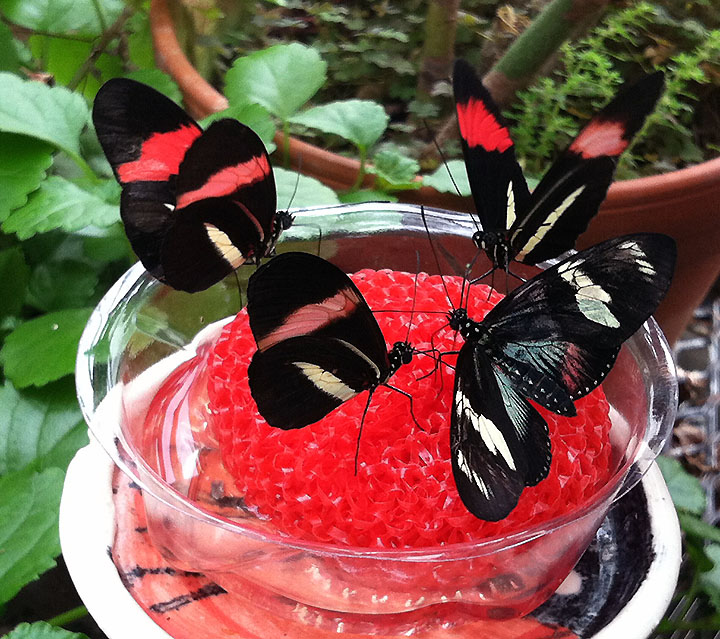
We had a tough combination at Dow Gardens’ Butterflies in Bloom on Tuesday: lots of small children and lots of butterflies that wanted to hang out on the floor. Besides the obvious traffic hazard, the floor was a little chilly so I moved any butterflies that seemed inclined to linger there.
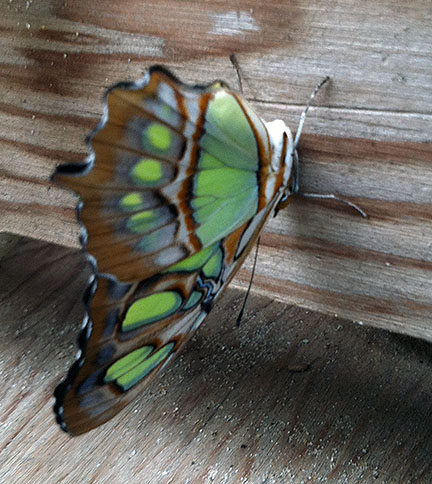
One advantage of having lots of small children visit is that they are quite concerned about the welfare of the butterflies. Several of them called me over to look at an emerald swalllowtail that was motionless on a leaf. It was battered but not quite dead, so I gently scooped it up and promised to put it in a protected area (which I did), and reminded them that the butterflies don’t live a long time, so this one might just have been 85 in butterfly years.

Just after this, a boy about first grade came up, softly took me by the hand and led me to the object of his concern, a black crumpled object in a puddle below a misting fan.
“That’s a dead leaf. It’s OK,” I told him.
“I thought it was a butterfly.”
“No, it’s a leaf, but thank you. That was important for you to tell me. Good job.”

We also had a few butterflies that hadn’t developed properly, but were strong enough to fly around and find food. One orange Julia in particular was a bit wrinkled and a little slower than it should have been, so when I found one child preparing to hand it off to another, I pointed out how its wings were not quite as flat as they should have been and asked them to be extra careful.
The giant owl below was a worse off example, and it kept falling to the floor. I ended up moving it to our orchid room, where at least if it fell again it would land on dirt, not concrete.

Identifying butterflies as opposed to other creatures is especially interesting because they can offer two very different views, depending on whether you see the top or underside of their wings. One of the most striking examples we have is the blue morpho, which is brown with an outer row of spots on the underside, but a brilliant blue on the top.
(The most thorough ID site I have seen is at Discover Life, www.discoverlife.org/mp/20q.)
In the two photos below, you can see the underside, then the top side of the same zebra mosaic butterfly’s wings.

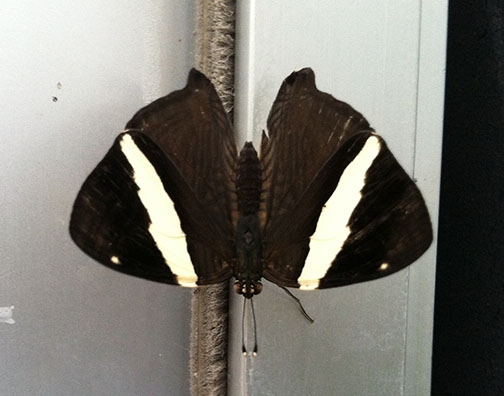
We get visitors who are quite serious about photography, with equipment to match. I often ask them if there is any particular variety they are seeking, and usually they’re just looking for whatever is new.
One gentleman, though, was focused on finding a clearwing. I had seen one in the emergence case and when I was letting out numerous other small butterflies, I called him over and pointed it out on the underside of a shelf.
“Do you want to shoot it here before I let it out, so you can be sure you have it?” He shook his head and I realized he needed it in a natural environment, so I released it and we watched together to see where it landed.
(Just after that a 9ish boy on the opposite side of the case tapped the glass and asked me if I would get out the red and black swallowtail that was shivering there. “Sorry, that one’s not ready.” Case relocked.)
The clearwing conveniently landed on a plant just below shoulder height, and soon there were several photographers gathered, politely taking their turns at the angles they wanted. After a few minutes, the gentleman showed me one of the many photos he had taken of the clearwing and explained that he and another gentleman he had met about 20 years ago had started shooting butterflies at the annual exhibit at the Frederik Meijer Gardens in Grand Rapids, but then had started traveling to Midland as well.
“Mine’s better,” he said of his photo.
“Oh, so you compete to see who can get the best shot of each variety,” I said, smiling and nodding.
He wouldn’t confirm it aloud, but his sly smile spoke for him.
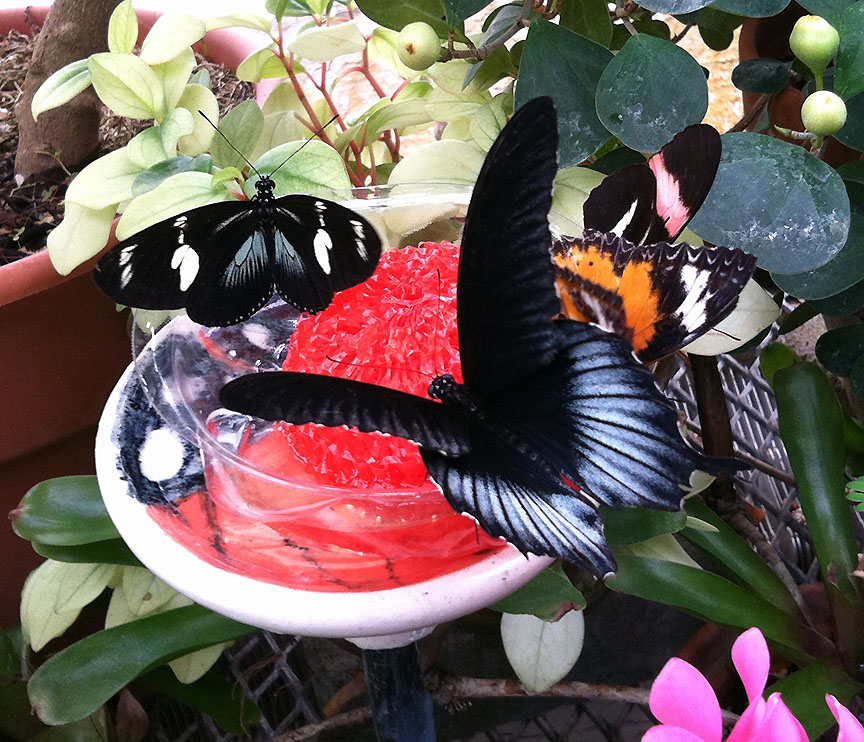

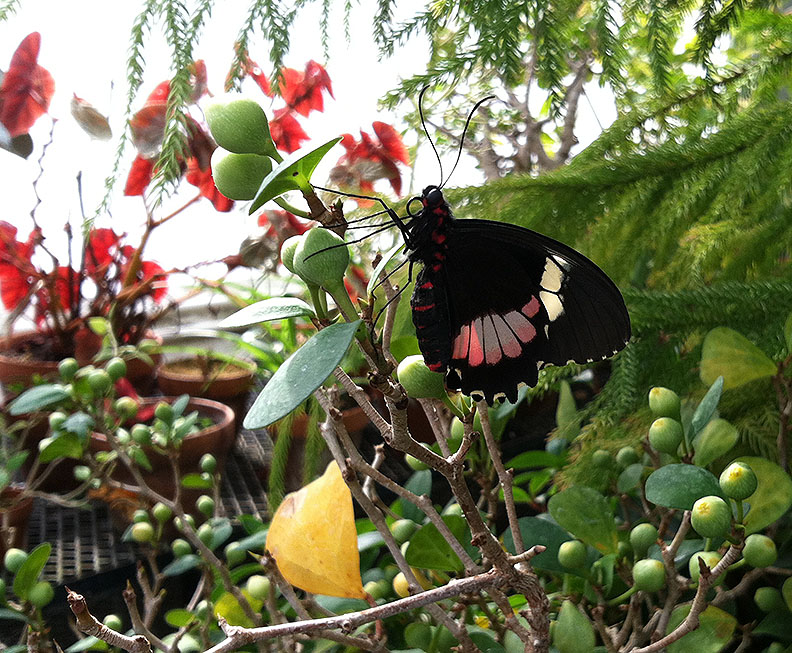
This week I’ll largely post photos. That’s what most people want anyway.
There was a lot of emergence in this, the first full week of Dow Gardens’ Butterflies in Bloom. We also had three mating pairs, which I haven’t seen this early on. For the most part people kept a respectful distance, but one woman plucked a mating pair off a marigold when I was busy elsewhere and put them on her toddler grandson to photograph. SERIOUSLY? Like you’d want to be bothered that way. And no, they were not at all inclined to separate; I don’t know how long they go at it, but some of them remained fond of each other for my entire 2-hour shift.

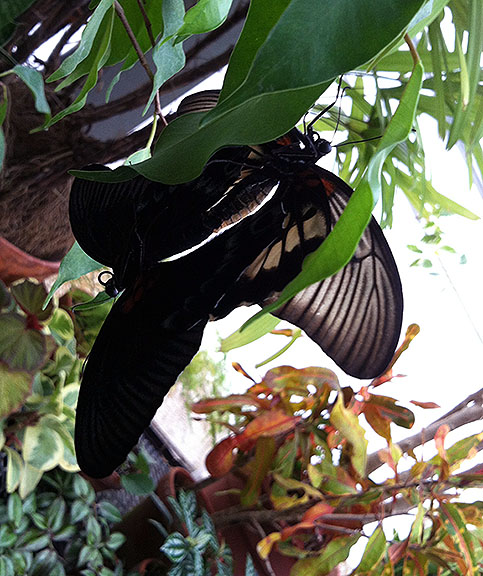

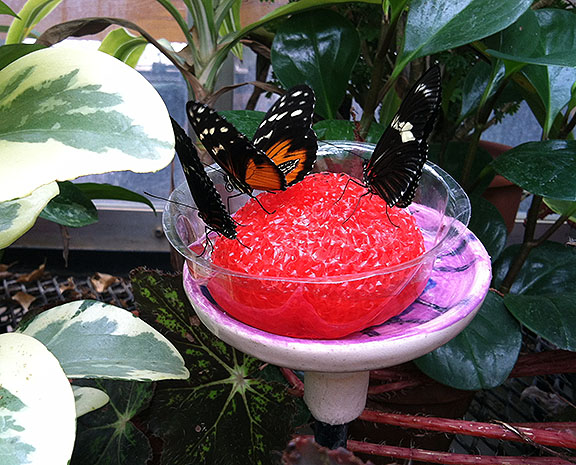
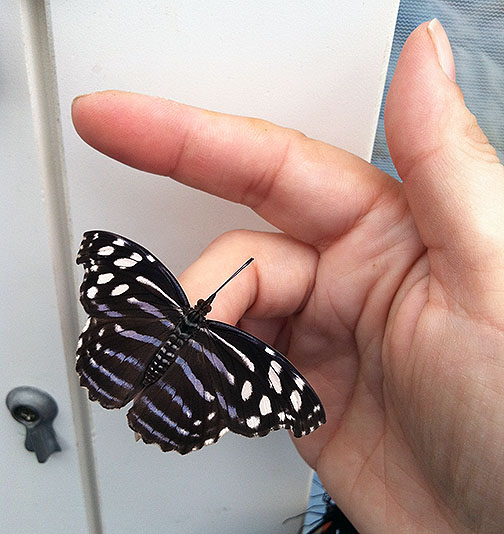
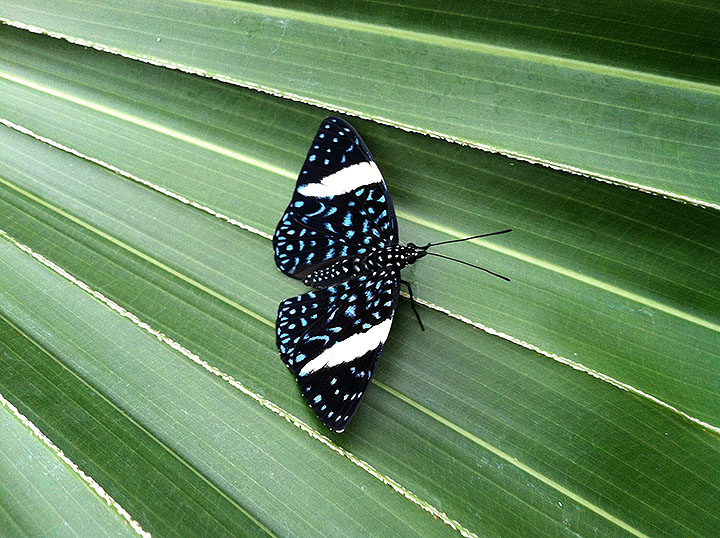
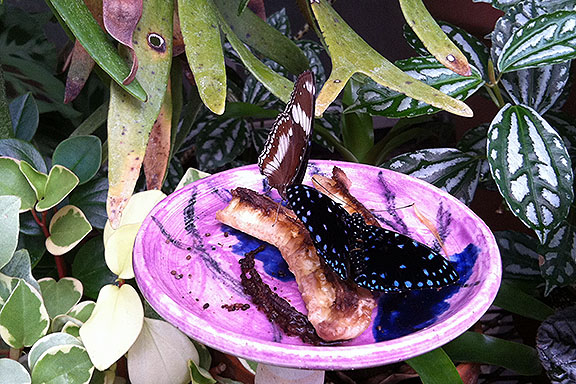
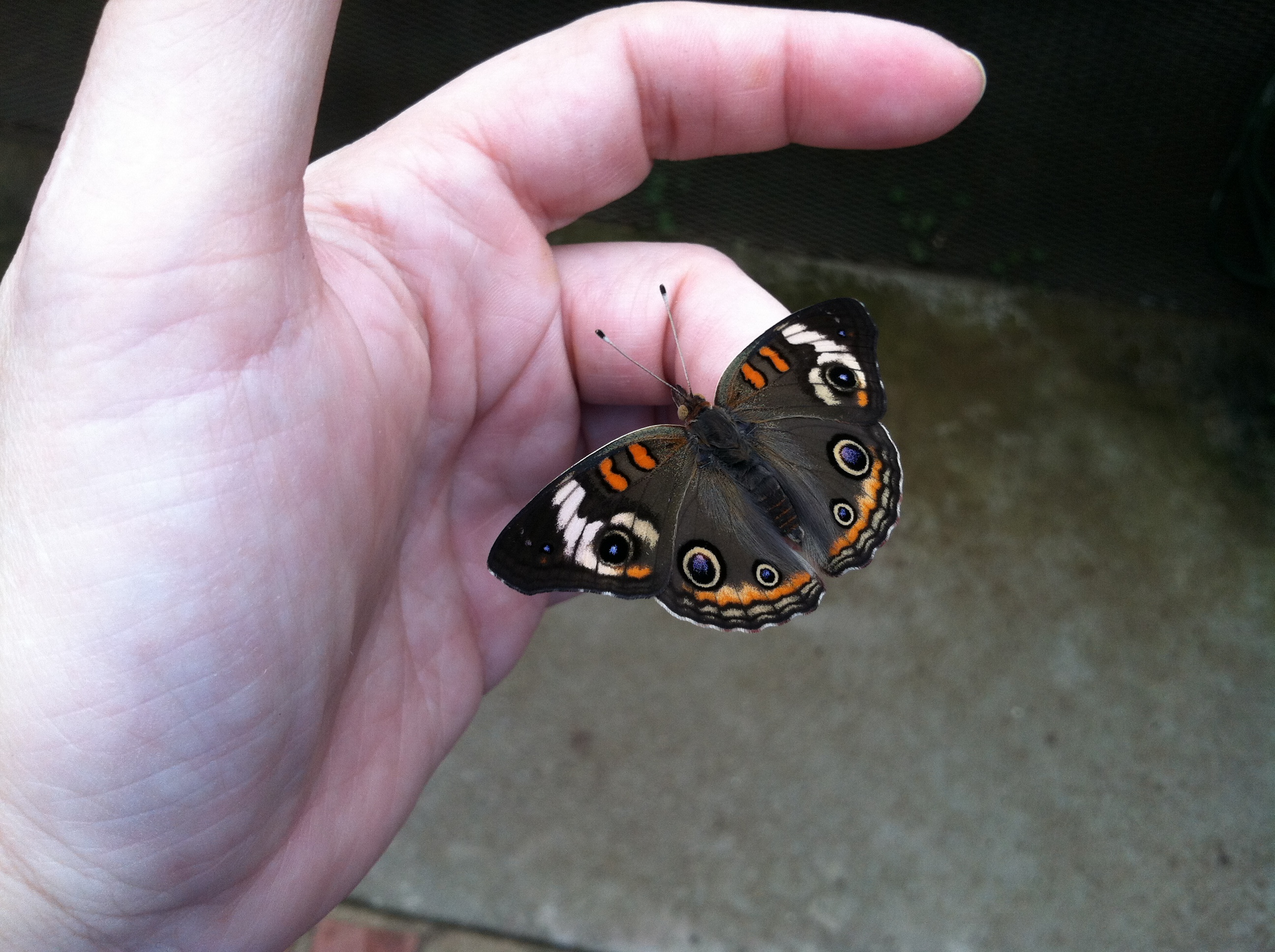
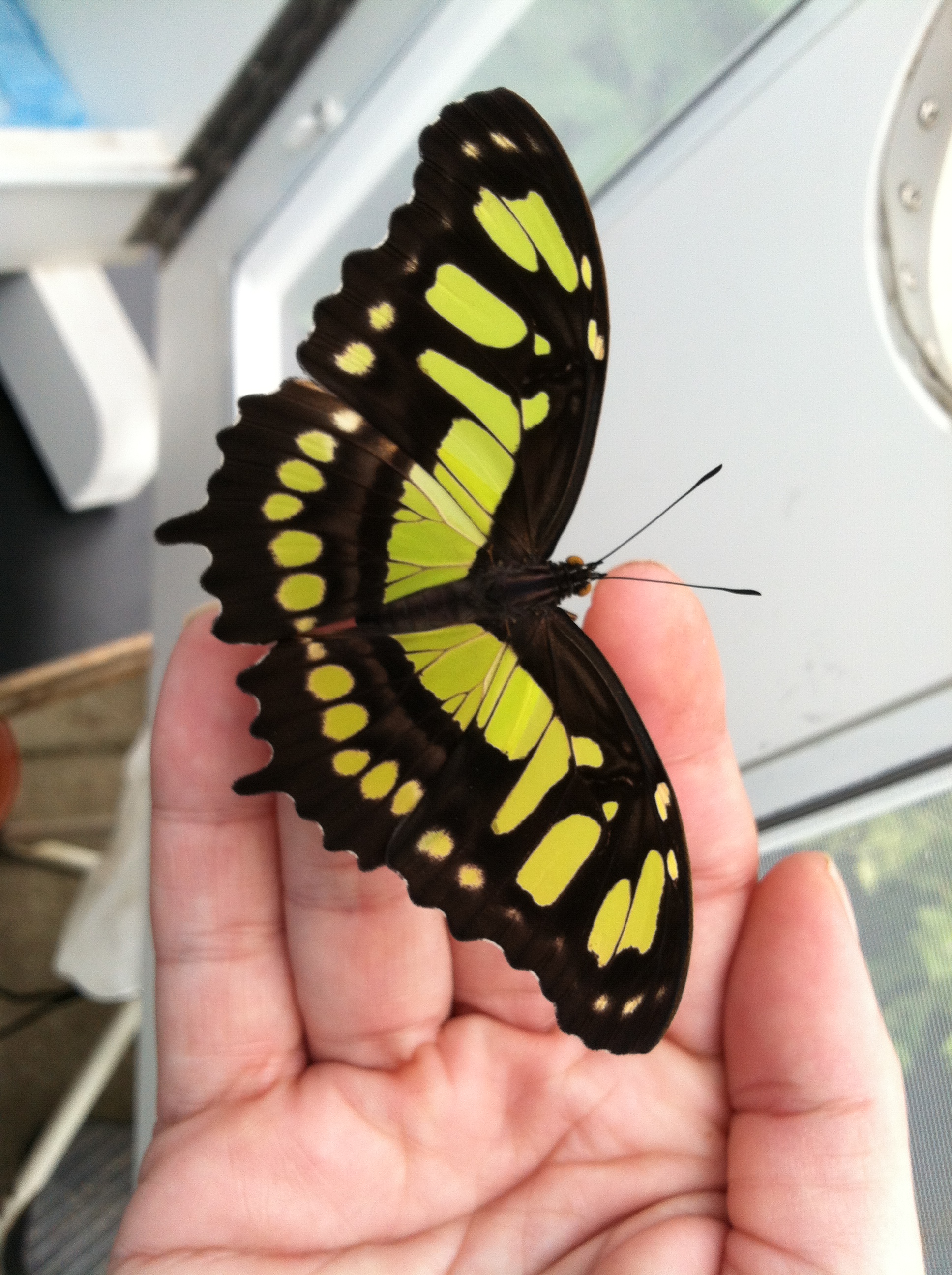


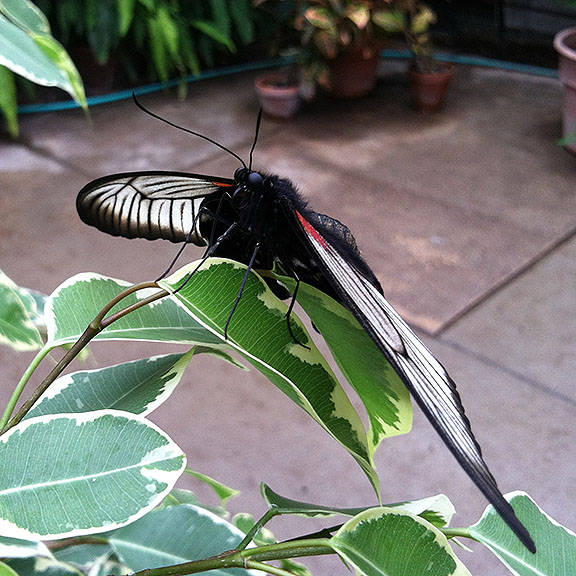



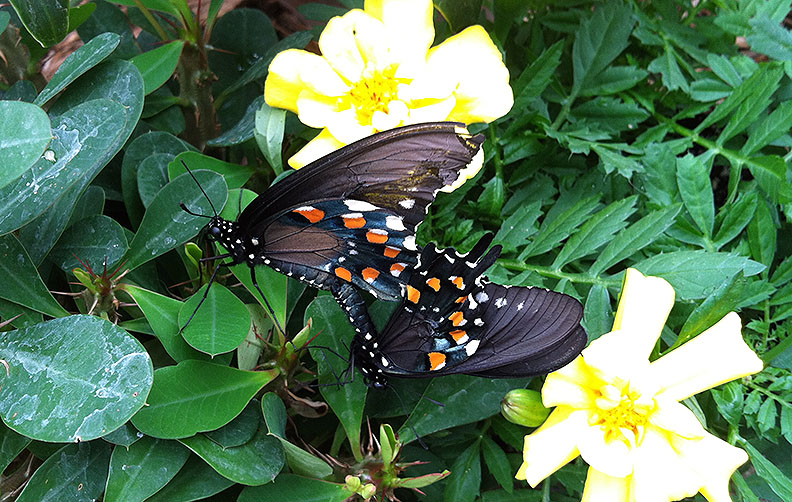


It’s time for the best 8 weeks of volunteering I will spend all year: tending baby butterflies.
This is the quietest week of Butterflies in Bloom, because the exhibit isn’t open to the public yet. Friday morning it will be; get all the details at www.dowgardens.org/butterflies.
What is there to do with no visitors? The usual: check the chrysalis case for parasites, check further to see who has emerged and if anyone is in trouble, then water the floor. Seriously, because so many of the species we get are jungle and rainforest dwellers, we keep the humidity in the conservatory cranked, so in addition to running the misting fans, we water the floor, which is mostly brick.
 This puppy at left (haha!) displays the humidity inside the chrysalis case, with readings updated every 15 minutes.
This puppy at left (haha!) displays the humidity inside the chrysalis case, with readings updated every 15 minutes.
I release butterflies when they are flying about quite actively, practically beating the glass. How long this takes is closely tied to size. Smaller butterflies might take a couple of hours to fully extend and dry their wings, while some of our largest varieties can take half a day.
I’ll let the photos tell the rest of the story, but if you have questions, by all means ask in the comments. And check back the next seven Wednesdays for more butterfly photos.
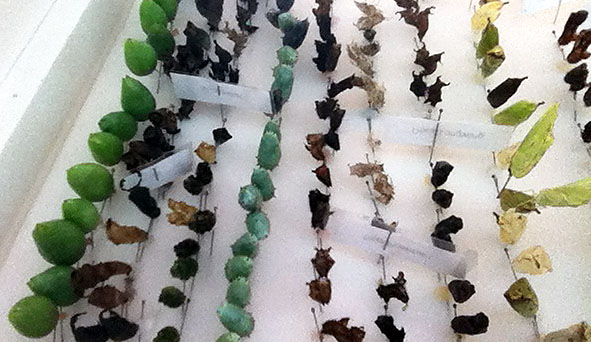
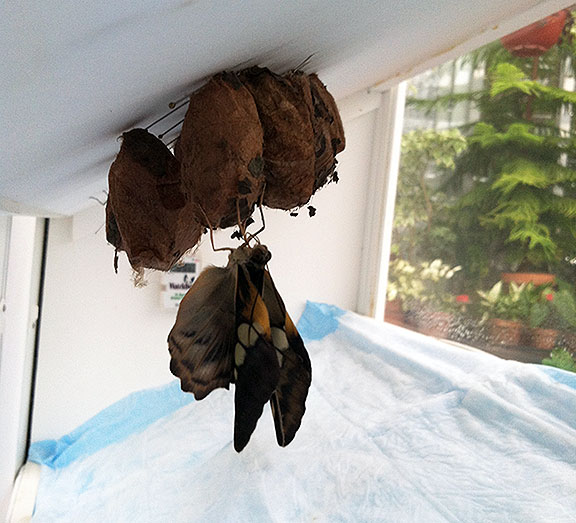
This guy bummed me out because I don’t think he’s going to make it. This is a brown clipper that got stuck emerging, so the wings were out and starting to dry, but they weren’t completely unfolded because the abdomen was stuck in the chrysalis. I watched him struggle for several minutes, wishing our fabulous entomologist would walk in and save the day, but she didn’t so I unpinned him and gently scraped away the paper-thin trap. Unfortunately, the struggle might have exhausted him, because he didn’t move much after that, although I did see him uncurling and curling his proboscis about an hour and a half later just before I left. (I’m saying “he” but truly I don’t know. Some are easier to tell than others.)
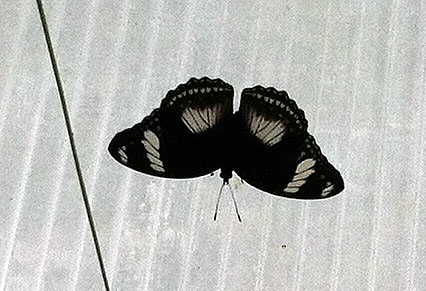
At right, this black and white butterfly resting near the conservatory walls had a silhouette effect.
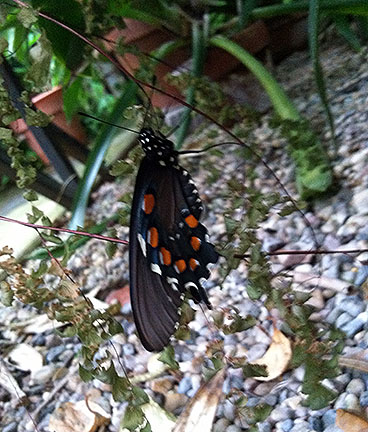
Some butterflies prefer being close to the ground, like this swallowtail at right. As long as this doesn’t place them near the emergency exit, which carries a wicked breeze beneath it this time of year, near or even on pavement is fine.

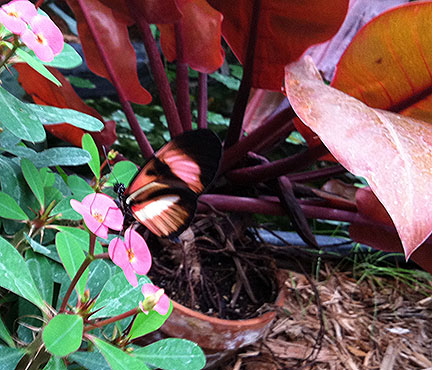
Some of our butterflies are hybrids of two varieties, like this longwing at right. This is near the small pond, home to a pair of quite old frogs who have learned to love this annual exhibit.
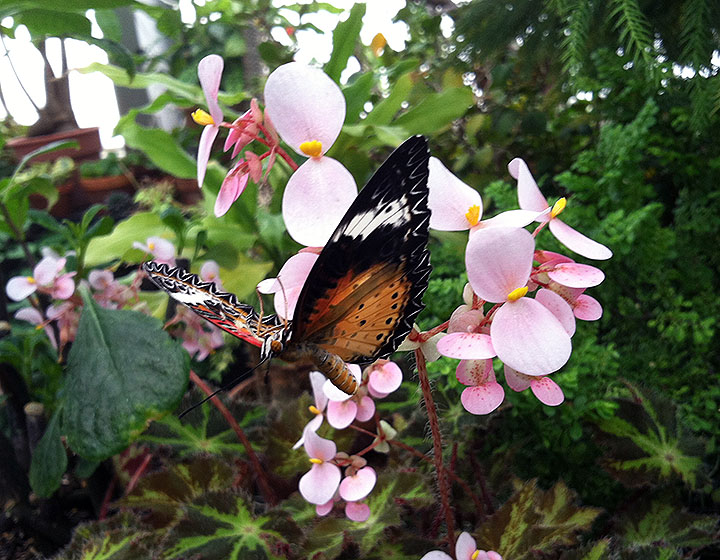

As opposed to the first week, when the bitter cold outdoors made it difficult to keep the humidity in the Conservatory high enough, there were lots of new butterflies emerging, perhaps a dozen just in the two hours I was there.

That doesn’t mean the cold has passed. Far from it as you can see above, with snow surrounding the red bridge that leads to the exhibit. (Dow Gardens also has a fully barrier-free streamside path that leads to Butterflies in Bloom, but I alternate routes.)
Sometimes even when butterflies are quite strong, they don’t go far after being released from the emergence case. This one decided that chilling on the case’s back door was just fine.
We had several blue morphos emerge, which made me happy because they are a visitor favorite. They are our largest butterfly; one is pictured above on a delicacy, rotting kiwi. When it opens its wings, the “top” sides are a beautiful blue.

Some species take longer than others to be dry and strong. Swallowtails, like the one above on the Nordic pine in the nursery area, sometimes shake as if they are chilly. Monarchs are notorious for crashing and needing quick rescue, and the blue morphos are so large that they make take half a day before they are ready for release, while some small species are vigorously flying about inside the case in two hours or less.
Got questions? Ask!